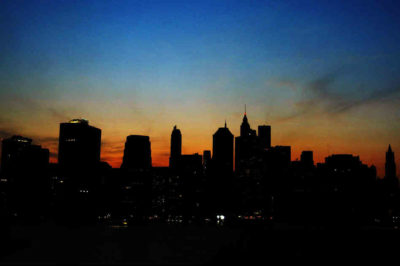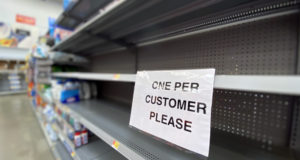 Demonstrating that the US Government believes the electric grid is truly vulnerable, government officials will take part in a drill Wednesday and Thursday to simulate what would happen if the power grid is down for several months – a scenario that would impact everything from food and gas delivery to water service.
Demonstrating that the US Government believes the electric grid is truly vulnerable, government officials will take part in a drill Wednesday and Thursday to simulate what would happen if the power grid is down for several months – a scenario that would impact everything from food and gas delivery to water service.
As previously reported by Off The Grid News, the drill known as GridX II has multiple participants, including the National Guard, the FBI, several US government agencies, the North American Electric Reliability Corporation and about 150 companies. Canada and Mexico also are take parting, showing how one country’s power grid problems don’t stop at the border.
The power grid is often called America’s glass jaw because of the nation’s reliability on it but also due to its many weaknesses, such as its vulnerability to a domino effect because it is interconnected. The famous Northeast Blackout of 2003 began with a tree limb falling in Ohio and, after a a chain reaction, ended up with 50 million people losing power, including those in New York City and parts of Canada.
The latest power grid drill, though, will go far beyond examining a scenario in which the power is down for only a couple days, as was the case in 2003. The latest drill will examine what would happen if a domestic or foreign terrorist – or even a rogue country – intentionally tried to destroy America’s vulnerable, interconnected grid, delivering a knockout blow.
“If we fail at electricity, we’re going to fail miserably (at everything else),” Curt Hébert, former chairman of the Federal Energy Regulatory Commission, said according to The Times. Without electricity, gas pumps don’t operate. Neither do large companies that feed most of America. Fresh food spoils. Essentially, without electricity, America struggles to survive and feed itself.
Harness the power of the sun when the power goes out…
Specifically, GridX II will examine the government’s and electric industry’s response to a potential cyber attack or a physical attack. A cyber attack could happen any number of ways, but one example would be a terrorist using something as simple as a USB thumb drive to upload a virus into power plant computers. That was the premise for a novel by former US Senator Byron Dorgan, who believes America is vulnerable to an attack on the grid. A physical attack could happen if someone uses a bomb or other explosive device to destroy essential equipment that often is located miles from cities and populations. That remoteness alone could make the system vulnerable.
But there are other ways large sections of the grid could be impacted for weeks or months:
- An electromagnetic pulse attack (EMP), which could be used by a terrorist or a rogue nation. An EMP is a high-intensity burst of electromagnetic energy caused by the rapid acceleration of charged particles. It would happen following the detonation of a nuclear bomb high above cities via a missile, frying the power grid. Congress formed a commission to study and issue a report on such a possibility.
- An earth-directed solar flare. A major solar flare took place in 1859, causing telegraph systems to fail and even shocking telegraph operators. The solar storm was so significant that Northern Lights were seen as far south as Cuba and Hawaii.
The electric system has improved some since the blackout of 2003, but not nearly enough. Earlier this year, the American Society of Civil Engineers gave the current U.S. electrical grid a grade of D+ when it evaluated the system for security and other vulnerabilities. There are about 5,800 power plants and 450,000 miles of high-voltage transmission lines in the US, many of them decades old and a large portion of them connected to one another. The D+ grade meant that the grid was in “poor to fair condition and mostly below standard, with many elements approaching the end of their service life.” It further meant a “large portion of the system exhibits significant deterioration” with a “strong risk of failure.”
“America relies on an aging electrical grid and pipeline distribution systems, some of which originated in the 1880s,” the report read.
 Off The Grid News Better Ideas For Off The Grid Living
Off The Grid News Better Ideas For Off The Grid Living



